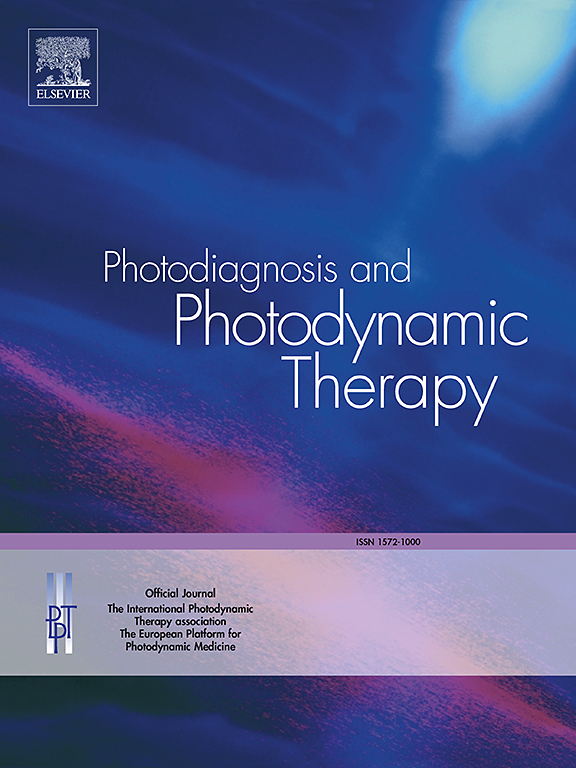Hematoporphyrin derivative-photodynamic therapy (HpD-PDT) for extensive vulvar and vaginal Bowen's disease: A case report
IF 3.1
3区 医学
Q2 ONCOLOGY
引用次数: 0
Abstract
Bowen's disease (BD) is an intraepithelial squamous cell carcinoma (SCC) that commonly affects older individuals, with the vulva being a prevalent site in women. Lesions within the vagina pose a particular challenge for surgical treatment, often compromising both functional integrity and cosmesis. Photodynamic therapy (PDT) is an emerging, safe, and non-invasive technique utilizing a photosensitizer and a specific light source, widely applied in the treatment of malignancies and skin diseases. We report the case of a 74-year-old woman presenting with a large, dark brown patch on the vulva, histopathologically confirmed as BD. The patient also had lesions within the vagina. Hematoporphyrin derivative-photodynamic therapy (HpD-PDT) was administered, with an optical fiber used for targeted treatment of the vaginal lesions. Complete resolution of the lesions was observed after a single treatment. A follow-up biopsy at 7 months post-treatment revealed no residual tumor cells. The patient remains disease-free at 2 years follow-up and continues to be monitored. This case suggests that HpD-PDT is a viable treatment option for BD, and may be particularly advantageous for elderly patients with extensive or vaginally located lesions, where preserving function and cosmesis is paramount.
血卟啉衍生物光动力疗法(HpD-PDT)治疗广泛外阴和阴道鲍文氏病1例报告。
鲍恩氏病(BD)是一种上皮内鳞状细胞癌(SCC),常见于老年人,外阴是女性的常见部位。阴道内病变对手术治疗提出了特别的挑战,通常会损害功能完整性和美容。光动力疗法(PDT)是一种新兴的、安全的、无创的利用光敏剂和特定光源的技术,广泛应用于恶性肿瘤和皮肤病的治疗。我们报告一例74岁女性外阴出现大的深棕色斑块,组织病理学证实为BD。患者阴道内也有病变。采用血卟啉衍生物光动力疗法(HpD-PDT),光纤用于阴道病变的靶向治疗。在一次治疗后,观察到病变完全消退。治疗后7个月的随访活检显示没有残留的肿瘤细胞。在2年的随访中,患者仍无疾病,并继续接受监测。本病例提示HpD-PDT是BD的一种可行的治疗选择,对于广泛或阴道病变的老年患者尤其有利,在这些患者中,保留功能和美容是最重要的。
本文章由计算机程序翻译,如有差异,请以英文原文为准。
求助全文
约1分钟内获得全文
求助全文
来源期刊

Photodiagnosis and Photodynamic Therapy
ONCOLOGY-
CiteScore
5.80
自引率
24.20%
发文量
509
审稿时长
50 days
期刊介绍:
Photodiagnosis and Photodynamic Therapy is an international journal for the dissemination of scientific knowledge and clinical developments of Photodiagnosis and Photodynamic Therapy in all medical specialties. The journal publishes original articles, review articles, case presentations, "how-to-do-it" articles, Letters to the Editor, short communications and relevant images with short descriptions. All submitted material is subject to a strict peer-review process.
 求助内容:
求助内容: 应助结果提醒方式:
应助结果提醒方式:


